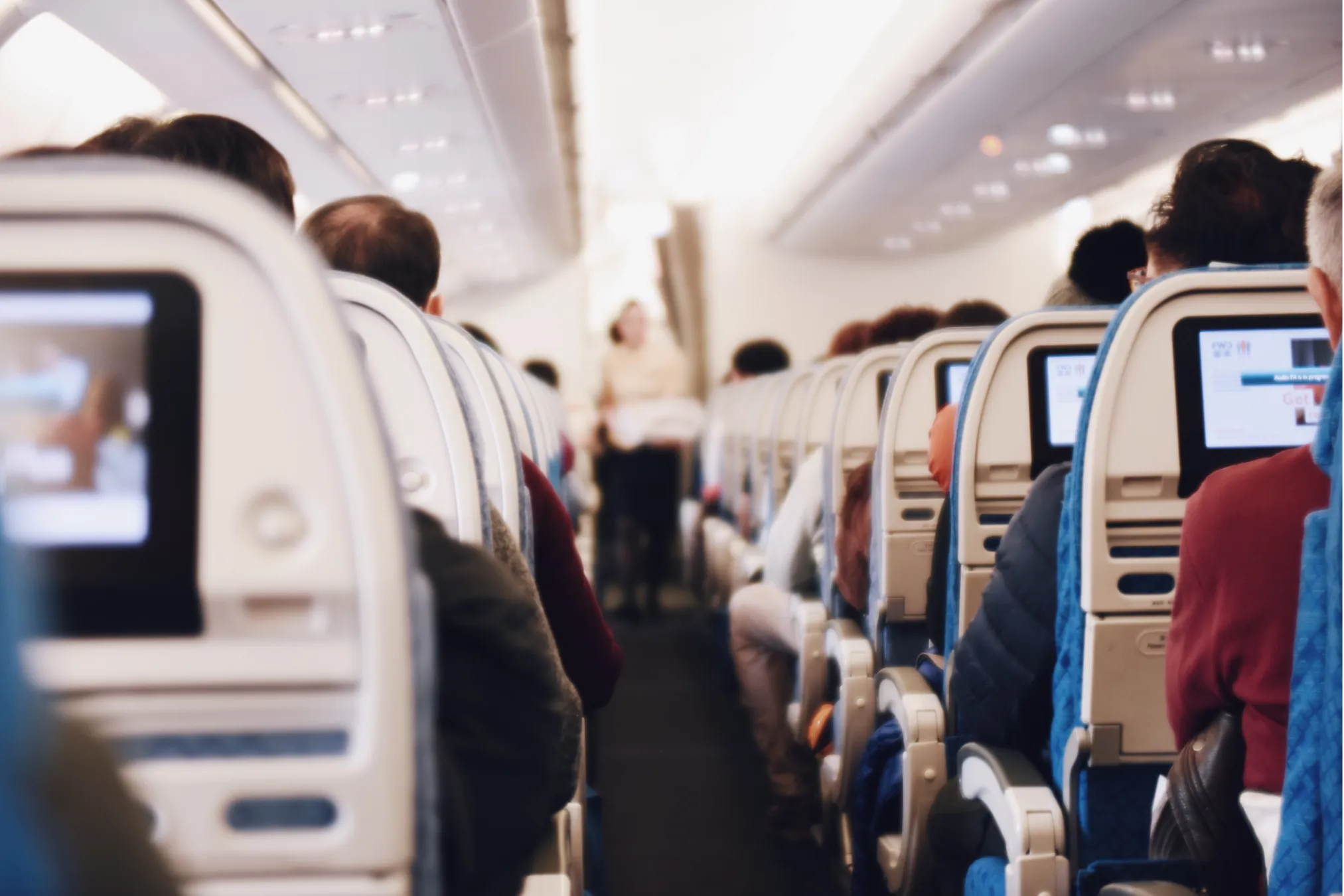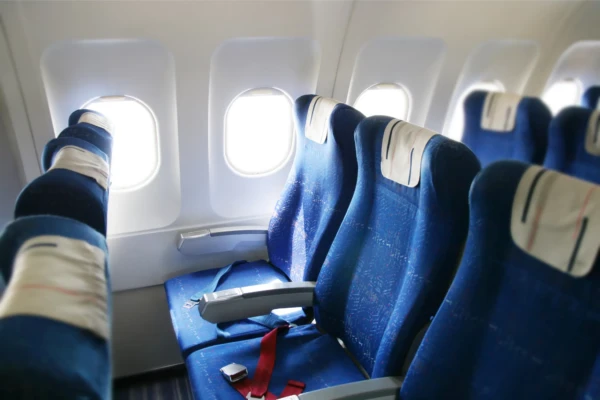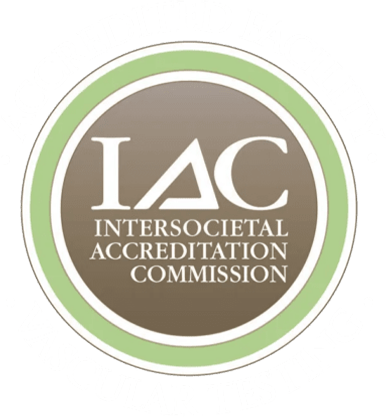
Air travel involves more than just dealing with flight delays, lost luggage, or the risk of contracting diseases. Long-haul flights can also increase the risk of developing blood clots. The estimated incidence of blood clots among airline passengers is approximately 1 case per 4,650 flights longer than 8 hours.
Blood clots, or thrombosis, are blood clusters within veins or other blood vessels. Deep vein thrombosis (DVT) occurs when a clot forms in a major vein deep within the body, usually in the lower leg or thigh, and can obstruct blood flow through the affected vein. Extended periods of immobility during air travel can significantly increase the risk of developing blood clots. Sitting still for hours at 30,000 feet can negatively impact circulation, leading to potential blood clot formation.
At The Vein Institute of Jacksonville, we understand the significance of maintaining healthy veins, especially during travel. With the right knowledge and precautions, you can protect your vein health even while traveling worldwide.
How Does Flying Cause Blood Clots?
 Remaining stationary for extended periods poses a risk of clot formation. Movement prompts muscle contractions that push blood back to the heart through your veins.
Remaining stationary for extended periods poses a risk of clot formation. Movement prompts muscle contractions that push blood back to the heart through your veins.
Sitting for hours during lengthy flights allows blood to accumulate and causes the veins in your knees to bend at an angle, restricting blood flow. Like water encounters difficulty flowing through a twisted garden hose, blood faces challenges circulating through kinked veins.
Additionally, fluctuations in air pressure within the airplane cabin reduce oxygen intake. Diminished oxygen levels in your blood further elevate the likelihood of blood clot formation.
Symptoms of Blood Clots
Symptoms of blood clots may manifest as:
- Leg pain, cramping, or tenderness
- Swelling in the ankle or leg, often affecting only one leg
- Discolored, bluish, or reddish patches on the leg
- Skin that feels warmer to the touch than other parts of the leg
It’s important to note that blood clots can sometimes be asymptomatic. If your doctor suspects a deep vein thrombosis (DVT), diagnostic tests like venous ultrasound, venography, or MR angiography may be conducted to confirm the diagnosis.
Symptoms of a pulmonary embolism (PE) include:
- Shortness of breath
- Chest pain
- Coughing
- Dizziness
- Irregular heartbeat
- Sweating
- Swelling in the legs
PE symptoms necessitate immediate medical attention as they signify a medical emergency. Before starting treatment, your doctor might perform a CT scan to confirm the diagnosis.
Why Are Blood Clots Dangerous?
Blood clotting is a natural process within the body. However, clot formation inside blood vessels can hinder blood flow or cause blockages, a condition known as thrombosis.
Venous thromboembolism (VTE) is clot formation within veins. This includes conditions such as deep vein thrombosis (DVT) and pulmonary embolism (PE). DVT primarily occurs in the limbs, while PE occurs when a blood clot dislodges and travels to the lungs. In severe cases, PE can obstruct the heart’s ability to pump blood effectively, leading to heart failure. Both DVT and PE pose life-threatening risks.
What Raises Your Chances of a Blood Clot While Flying?
Obesity, defined as having a body mass index (BMI) of 30 or higher, poses a significant risk for blood clots by slowing down blood flow through the veins due to the excess weight.
Moreover, several factors can increase your likelihood of developing blood clots during a flight, including:
- Being over 40 years old
- Recent injury or surgery within the past 3 months
- Use of birth control pills or hormone replacement therapy
- Pregnancy or childbirth within the last 3 months
- History of previous blood clots
- History of stroke, cancer, or heart disease
- Varicose veins are characterized by swollen, twisted veins with faulty valves that impede blood flow and may lead to pooling.
While blood clots forming in varicose veins are typically less hazardous than those in deep veins since they are closer to the skin’s surface and less prone to travel to the lungs, they can still cause discomfort and warrant attention.
Prevent Blood Clots While Flying
 To reduce your risk of blood clots during air travel, consider the following measures:
To reduce your risk of blood clots during air travel, consider the following measures:
- Medication: Based on your health history, your doctor may suggest taking aspirin or a blood thinner, orally or via injection, 1-2 hours before your flight.
- Wear compression socks: These can enhance blood circulation in your legs while seated. Ensure you select the appropriate type of compression socks and consult your doctor if unsure.
- Seat selection: You can opt for a spacious seat, such as an aisle or bulkhead seat, or pay for extra legroom, which allows you to move around more freely during the flight.
- Move around: Take breaks to walk around at least once every hour. Engage your calf muscles while seated by extending your legs straight and flexing your ankles upward. Consider bringing a tennis or lacrosse ball to massage your leg muscles while seated.
- Communicate with the airline: Inform the airline if you are prone to blood clots, as they may accommodate your need to move around the plane more frequently.
- Massage your leg muscles: Massage can enhance circulation along with leg movement. While seated, bring a ball to massage your thigh and leg muscles.
According to the 2021 guidelines from the American Society of Hematology (ASH), preventive medication and wearing compression socks are particularly suitable if you are at a higher risk of developing a blood clot.
Additional precautions include avoiding crossing your legs, wearing loose clothing, and staying hydrated by drinking at least 8 ounces of water per hour while limiting alcohol and coffee intake to prevent dehydration.
Next Steps for Vein Health While Flying
As you prepare for your next adventure, remember to prioritize your vein health during long flights. By staying informed and implementing preventive measures, you can minimize the risk of blood clots and enjoy your travels to the fullest. If you have more questions or concerns about your vein health before your travels, don’t hesitate to schedule an appointment with The Vein Institute of Jacksonville for personalized advice and vein care solutions.

IAC Accredited Vascular Testing
We are proud to be distinguished as an IAC Accredited Vascular Testing Facility. The Vein Institute adheres to the strictest national guidelines for vascular testing, demonstrating a commitment to the highest quality patient care.
During hot summer weather, the symptoms of varicose veins tend to worsen, causing more pain and inflammation. About 24 million Americans suffer from vein issues, and the high temperatures can exacerbate these conditions, leading to discomfort and swelling. How can you keep your varicose veins from worsening when the weather gets warmer? At The Vein […]
As you already know, pregnancy can bring significant changes to the body, but did you know that up to 40% of pregnant women experience varicose veins during pregnancy? When pregnant, women are also up to five times more likely to develop vein conditions as compared to those who are not pregnant. At The Vein Institute, […]




